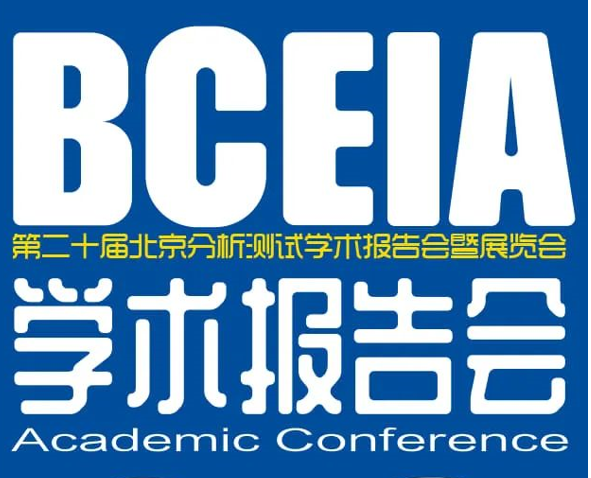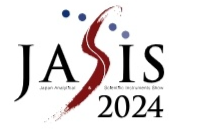







MS搬运工


第二十届北京分析测试学术报告会暨展览会(BCEIA 2023) 将于2023年9月6-8日在北京· 中国国际展览中心(顺义馆)召开。作为中国分析与生化技术交流与展示的“峰会”,BCEIA2023将营造浓郁的学术会展氛围,同期举办大会报告、分会报告、高峰论坛、同期会议、墙报展等精彩学术活动,面向世界科技最前沿,邀请国内外顶尖学者分享最具前瞻性的研究进展。
2023年9月7-8日,BCEIA2023学术报告会——质谱学分会将在学术会议区W-105会议室举行,以“质谱分析引领交叉学科前沿研究”主为题,围绕质谱基础理论研究与应用、质谱仪器研制与新技术创新、蛋白质及修饰组学分析、表观遗传修饰与基因组学分析、质谱分析技术与样品前处理、质谱分析在生命、医药、食品、能源、资源与环境等领域等几个专题方向,邀请到40余位国内外质谱领域资深科学家及青年才俊带来精彩报告。
召集人简介

中科院生态环境研究中心研究员,杰青,基金委创新群体负责人。主要从事高灵敏DNA表观遗传修饰的质谱分析新方法新技术研究,并开展DNA 损伤修复、表观遗传与分子毒理方面研究。发现高等生物的N6-甲基腺嘌呤(Cell, 2015, Cover),是表观遗传领域的原创性突破。已发表SCI 论文260 篇,包括Cell、Nature、Science、Cancer Cell、Cell Stem Cell、Mol Cell、Cell Res、J. Am. Chem. Soc.、PNAS、Cell Discovery、Nucleic Acids Research、EHP、Anal Chem、 ES&T 等。中国化学会质谱分析专委会副主任兼秘书长。 先后获得中科院院长特别奖(1997),中国分析测试协会科学技术奖特等奖(2015、2020)、一等奖(2010、2013)和优秀奖(1998、1995),教育部优秀成果一等奖(2007),中科院“优秀研究生导师奖”(2012),中科院“优秀研究生指导教师奖”(2013),中科院“杰出成就奖”(主要完成者)(2013)。
主旨报告人

报告摘要
Exposure to environmental organic pollutants has triggered significant ecological impacts and adverse health outcomes, which have been received substantial and increasing attention. The contribution of unidentified chemical components is considered as the most significant knowledge gap in understanding the combined effects of pollutant mixtures. To address this issue, remarkable analytical breakthroughs have recently been made.
Advances in analytical methods have resulted in lower detection limits, a broader range of observable analytes, and faster data acquisition rates. The number of organic contaminants found in complex environmental matrices is steadily increasing. The emerging HRMS techniques have the theoretical potential to search for and tentatively identify all molecules present in a sample, whether known or unknown. The chemical analysis in the future is expected to gradually evolve from targeted analysis of priority pollutants and biomarkers to automated “big data” nontarget screening analysis in combination with multiplexed bioassays. This evolution is bound to contribute significantly in cutting-edge research.
专家简介
中国科学院院士,发展中国家科学院院士,分析化学、环境化学家。现任中国科学院大学资环学院院长,环境化学与生态毒理学国家重点实验室主任,中国分析测试协会理事长,中国化学会副理事长,中国毒理学会副理事长,美国化学会ES&T杂志副主编。现任或曾任国家973顾问组成员,国家纳米重大研究计划专家组成员,国家环境咨询委员会委员,国家食品安全风险评估专家委员会委员,国务院食品安全专家委员会成员等。
研究领域涉及化学形态和环境毒理与健康等。分别参加过我国南极和北极科学考察。推进了我国持久性有毒污染物的研究,开始了新型环境污染物发现与毒理研究等新学术方向。曾负责和完成我国环境内分泌干扰物筛选与控制的第一期和第二期863项目,负责和完成两期国家POPs 973项目,承担和完成我国POPs控制技术的第一个国家支撑项目,负责和完成2期国家基金委创新群体项目,负责和完成国家基金委重大基金项目“典型持久性有机污染物的环境过程与毒理效应”。现为中国科学院战略先导科技专项(B类)“环境污染的健康效应”首席科学家和国家基金委重大研究计划“大气细颗粒的毒理与健康效应”专家组组长。

报告摘要
Nitrogenous organic compounds in raw water are problematic for drinking water treatment because they can react with disinfectants to produce a variety of byproducts, including some odorous and toxic compounds. Determination of these nitrogenous compounds is critical for the optimization of treatment processes and ultimately for their removal. We describe here a set of analytical tools for the characterization nitrogenous organics in water. To selectively detect reactive nitrogenous organics, we have developed hydrogen/deuterium (H/D) stable isotopic methyl labeling with HPLC- high resolution mass spectrometry (HRMS) for nontargeted analysis. The optimized selective labeling reaction and the unique MS isotope pair patterns of H/D-labeled compounds enabled detection of reactive nitrogenous compounds in water samples. However, nontargeted analysis generated a large amount of data consisting of a vast number of unidentified nitrogenous and non-nitrogenous organics in source water. When H/D-labeled pairs were selected manually from the raw HPLC-HRMS data, analysis using the existing program was time-consuming and inefficient. Thus, we developed the automated data processing platform HDPairFinder.R. This platform integrates several modules into a freely available R package, and automatically extracts H/D-labeled nitrogenous organics from the raw HPLC-HRMS data. We demonstrate the capability of HDPairFinder for rapid processing of H/D isotopic methyl labeling-based nontargeted analysis of water samples, facilitating a better understanding of nitrogen-containing reactive chemical compounds in source water.
专家简介
Dr. Li is Professor and Canada Research Chair (Tier 1) in the Department of Laboratory Medicine and Pathology, Faculty of Medicine and Dentistry, at the University of Alberta, Canada. She is an elected Fellow of the Royal Society of Canada, Academy of Science. Dr. Li is the recipient of the 2020 Ricardo Aroca Award for “a distinguished contribution to the field of analytical chemistry”, the 2017 Environment Division Research & Development Dima Award for “distinguished contributions to research and/or development in the fields of environmental chemistry or environmental chemical engineering”, and the 2010 W.A.E. McBryde Medal for “a significant achievement in pure or applied analytical chemistry”, presented by the Canadian Society for Chemistry and the Chemical Institute of Canada.
Dr. Li received her Ph.D. in Environmental/Analytical Chemistry from the University of British Columbia (1990-1994). She did her NSERC Industrial postdoctoral research in bioanalytical chemistry under the supervision of Professor Norm Dovichi at the University of Alberta (1995-1997). She worked as a scientist with an instrumentation company and as Director of Analytical Department with a biopharmaceutical company for four years and was then recruited back to the university in 2001. She was promoted through the ranks to Full Professor in 2010.
Dr. Li’s research group develops innovative analytical and molecular techniques that enable ultrasensitive detection of environmental contaminants, microbial pathogens, and biomolecular interactions. Her team of students, postdoctoral associates, and collaborators carry out diverse research that contributes to water safety and public health protection.
特邀报告人


报告摘要
Small molecule metabolites represent important indicators of biological metabolic processes. Various isoform forms and different kinds of isomers were observed and verified relevant to specific biological functions. For example, L-amino acids (AA) serve as the primitive unit of proteins among mammals, while several D-AA are the vital components of bacterial membranes. L-Hydroxy acids (HA) act as the intermediates of glycolysis, instead, some D-HA are the key regulators in cell signal transduction.Chiral analysis of lactate by enzymatic dehydrogenation derivatization− nanoelectrospray ionization mass spectrometry. We have developed an on-probe enzymatic dehydrogenation derivatization single-cell mass spectrometry approach with ultra-high sensitivity. Results showed that the cocultured normal cells were similar to cancer cells at the metabolic level.
Enantiomeric separation of α‐hydroxy/amino acids (α‐HA/AA) by chiral derivatization-ion mobility−mass spectrometry (IM−MS). We have designed and synthesized a powerful mass-tagged chiral selector in regards of amino and hydroxy compounds, named [d0]/[d5]-estradiol-3-benzoate-17β-chloroformate ([d0]/[d5]-17-EBC). Good separation was achieved for the 17β-EBC-HA/AA epimers of 23 chiral AA and 10 chiral HA. Identification of unsaturated fatty acid (UFA) isomers by bi-derivatization−ion mobility−mass spectrometry. We have developed a 4-plex stable isotope labeling bi-derivatization strategy for the trace and chemically unstable UFA in complex matrix, in order to one-pot selectively label carbon-carbon double bond (C=C) and carboxyl group. It rapidly elucidated the structures of UFA by one-pot bi-derivatization coupled with IM−MS, pinpointing C=C positional and geometric isomers.
专家简介
Prof. Yinlong Guo is currently a professor at the Shanghai Institute of Organic Chemistry, Chinese Academy of Sciences. Prof. Guo obtained his doctoral degree from China Pharmaceutical University in 1993. His research interests mainly focus on the capture and detection techniques of organic reaction intermediates, derivatization reagents for mass spectrometry detection, and the development of new open ion sources. Prof. Guo has published over 300 research papers in Nature Catalysis and Angelw Chem Int. Ed., J. Am. Chem Soc., Anal. Chem, and has obtained over 30 invention patents.

报告摘要
Elemental analysis of solids is of utmost importance in the field of modern instrumental determination of element concentrations down to trace and ultratrace levels because a significant proportion of samples are solids. Direct solid analysis techniques offer crucial advantages compared with other conventional analytical methods, such as little or no sample pretreatment, little sample consumption, and fast analysis speed, especially for samples that are difficult, hazardous, or tedious to digest. The lack of suitable solid standards is the main difficulty that limits the application of direct solid analysis because most direct solid analysis techniques need solid standards for calibration and quantification. These solid standards must both be matrix matched and contain the necessary analyte elements with suitable concentrations for the calibration procedure. Among the mass spectrometry (MS) techniques, high irradiance laser ionization mass spectrometry (LIMS) has the potential to achieve standard-less direct solid analysis. It is well known that the relative sensitivities of elements approach uniformity under laser irradiance of 109-1010 W/cm2. This talk will focus on the development of and applications for high irradiance laser ablation and ionization mass spectrometry. The approaches to solve the bottleneck problems in traditional high irradiance laser ionization mass spectrometry, such as spectral interference from multiply charged ions and deteriorated mass resolution from energy broadly distributed ions, which allows the instrument to acquire explicit spectra with high resolution.
专家简介
Prof. Hang Wei is a Distinguished Professor of Nanqiang at Xiamen University. He obtained his doctoral degree from Zhejiang University in 1994. From 1994 to 1997, he engaged in postdoctoral research at the University of Florida in the United States, and later joined the Los Alamos National Laboratory as a research assistant (1997-1999) and senior researcher (1999-2005).Dr. Hang research interests include: development of mass spectrometor and new technique of signal detection, study of ion source and interfacing technology, and research of analytical chemistry focusing on MS in various fields including biology, medicine, environment, metallurgy, mineral and security inspection.

报告摘要
Single-cell analysis is an important research topic in analytical chemistry and related fields. As a highly sensitive element-specific detector, time-resolved inductively coupled plasma mass spectrometry (ICP-MS) has been used for elemental analysis in single cells, and droplet microfluidic chips are one of the effective strategies for single-cell manipulation. Herein recent research works based on microfluidic chip - ICP-MS for single-cell analysis in our research group will be introduced, including the fabrication of droplet-based microfluidic chip/device, droplet splitting microchips, and magnetophoresis focusing microchips as single-cell manipulation platform, their hyphenation with online time-resolved ICP-MS detection, analysis of trace element and their fractionation species in single cells, and investigation of cellular uptake behavior for nanoparticles at single-cell levels. The development prospects of single cell analysis by microfluidic chip-ICP-MS is also discussed.
专家简介
Dr. Bin Hu is a tenured professor in the Department of Chemistry at Wuhan University, China. He received his PhD from Wuhan University in 1992 and was a visiting scholar/postdoc research associate at Clemson University during 1996.6-1998.2. He serves as an Editor of Journal of Chromatography A, an Associate Editor of Journal of Analytical Atomic Spectrometry, and an Advisory/ Editorial Board member of Analytical Chemistry, Metallomics, Spectrochimica Acta Part B, Applied Spectroscopy Review, International Journal of Environmental Analytical Chemistry, and Environmental Pollutants and Bioavailability. He has published over 400 scientific papers in peer-reviewed journals including Angew. Chem. Int. Edit., ACS Nano, and Anal. Chem., as well as 2 books and several book chapters. His research interests are mainly focused on ICP-MS based strategies for biomedical analysis, hyphenated techniques for elemental speciation, metallomics, sample pretreatment techniques, metal-containing nanoparticles analysis and their biosafety. He received numerous scientific awards including the Natural Science Prize and New Century Excellent Talents from MOE of China, and Natural Science Prize and Outstanding Young Scientist Prize from Hubei Province, China.

报告摘要
In this study, we have demonstrated capillary ion chromatography or reversed phase liquid chromatography with mass spectrometry for both untargeted or targeted metabolomic analysis of head and neck squamous cell carcinoma (HNSCC). Functional pathway analysis of the metabolomic data revealed significantly altered metabolic pathways in HNSCC, including the dysregulated folate cycle. We then investigated the functional role of MTHFD1L, which is a key metabolic enzyme of folate cycle, in HNSCC. Our studies indicate that MTHFD1L promotes HNSCC proliferation, migration and invasion, and correlates with the survival of HNSCC patients. In addition, downregulation of MTHFD1L significantly suppresses the tumor growth in vivo and vice versa, suggesting that folate cycle and related metabolic enzymes may serve as therapeutic targets in HNSCC.
专家简介
Dr. Hu is a Professor and was previously the MS Program Advisor in the Division of Oral and Systemic Health Sciences at the UCLA School of Dentistry. He has managed the Oral Biology MS program since 2011. Dr. Hu is also a member of the UCLA Jonsson Comprehensive Cancer Center (JCCC) and currently serving as an editorial board member for multiple international journals. He recently edited the Cancer metabolomics: Methods and Applications for Springer Advances in Experimental Medicine and Biology book series.
Dr. Hu research interests include: cancer proteomics and metabolomics, cancer stem cells disease biomarker discovery. He is using novel metabolomics technology, as well as proteomics and genomics approaches, to study the metabolic reprogramming in cancer invasion and metastasis, identify metabolic targets for anti-cancer therapeutics, investigate the metabolic toxicity of nanomaterials, and discover metabolite biomarkers for clinical applications in cancer and oral diseases.

报告摘要
Class I histone deacetylases (HDACs) are promising targets for epigenetic therapies for a range of diseases such as cancers. Although six HDAC inhibitors have been licensed for clinical treatments, they are all pan-inhibitors with little or no HDAC isoform selectivity due to the fact that the active sites of Class I HDACs are almost identical, which in turn increases the challenge in designing HDAC isoform-selective inhibitors. Although there are several HDAC isoform selective inhibitors, such as PCI-34051 for HDAC8, have been reported, their mechanisms of action are largely unknown due to their high structural dynamics. Take HDAC8, the only class I HDAC that can function in isolation, for example, we studied the interaction of pan-inhibitor SAHA and selective HDAC8 inhibitor PCI-34051 with HDAC8 using structural mass spectrometry (MS) techniques, aiming to provide new structural insights for the design of HDAC isoform selective inhibitors.
Native MS not only revealed the binding stoichiometry and the relative binding strength, but also discovered that PCI-34051 binding can perturb the structure of HDAC8 and induce the loss of metal ions from HDAC8. Hydrogen deuterium exchange MS (HDX-MS) further disclosed that although SAHA and PCI-34051 share some common binding sites, PCI-34051 binds stronger and induces intense distant regulations, and the results were also confirmed by MD simulations. Over all, the integrative approach provides a comprehensive view of the dynamic mechanism of inhibitors’ binding and yields new insights into the design of isoform selective inhibitors.
专家简介
李惠琳 博士、教授、博士生导师,2013年于英国华威大学(University of Warwick)获得博士学位;2013年-2017年分别在美国加州大学洛杉矶分校(UCLA)和法国遗传与分子细胞生物学研究所(IGBMC)从事博士后研究;2017年12月经中山大学"百人计划"引进为药学院任教授。李博士主要从事生物质谱新技术的开发及应用,侧重于(1)开发研究蛋白质机器(蛋白-药物、蛋白-蛋白、蛋白-DNA等)的结构和功能的整合结构质谱技术(包括native top-down MS, HDX-MS, cross-linking MS等)用于药物作用分子机制、靶向药物筛选及蛋白复合物结构分析;(2)Middle-down/top-down蛋白质组学新技术的开发及在药物靶点发现及蛋白翻译后修饰(PTMs)在生命过程中的调控机制。共发表SCI收录论文33篇,其中第一作者或通讯作者12篇,主要发表在Nat. Chem.、Anal. Chem.等国际权威期刊;2014年获得American Society of Mass Spectrometry Postdoctoral Career Development Award(全球每年3~5人);受邀做大会报告2次,国际会议学术口头报告12次,学术邀请报告20余次;并曾担任国际会议(2015 Pittcon, 2019 Sanibel)分会场报告主持人;作为项目负责人承担国家自然科学基金面上项目、青年项目等项目5项

报告摘要
Under stress conditions including microbial infections, translationally stalled mRNA and associated proteins undergo liquid-liquid phase separation (LLPS) and condensate into cytoplasmic foci called stress granules (SGs). The formation of SGs may promote the expression of critical stress response proteins while shutting off the translation of other mRNAs. Dysregulation of this process underlies many pathological conditions such as neurodegenerative diseases. Many viruses hijack SG for their pathogenesis; however, whether pathogenic bacteria also exploit this pathway remains unknown. Shigella flexneri replicates in host cytosol by modulating diverse cellular pathways with more than 30 type III effectors. Here we report that members of the OspC family of S. flexneri induce SG formation to promote host survival. Mechanistically, the OspC effectors target multiple subunits of the host translation initiation factor 3 complex by ADP-riboxanation. The modification of eIF3 leads to translational arrest and thus the formation of SG. Our findings reveal a mechanism by which bacterial pathogens promote host cell survival by inactivating host translational machinery to induce SG assembly.
专家简介
刘小云,北京大学基础医学院病原生物学系研究员,博士生导师。先后获得青年千人计划和国家优秀青年基金资助。目前担任中国质谱学会学术委员、中国蛋白质组学专业委员会常务委员、中国化学会色谱专业委员会委员、中国生物物理学会肠道菌群分会理事、国际组学期刊J. Proteome Res.编委等职。课题组致力于发展和运用高通量蛋白质组学方法研究人类重要病原菌与宿主互作的分子机理,为抗感染药物研发提供重要的理论基础。以通讯作者在Nature, Mol. Cell, PLOS Pathog., Mol. Cell. Proteomics, J. Proteome Res.等期刊发表论文80余篇。

报告摘要
Inductively coupled plasma mass spectrometry (ICPMS) has been regarded as a predominantly commercial instrument for metals determination with high sensitivity. More intriguingly, because multiple metal-labeled reporters without radioactive, optical, electric, or any other special properties, can be detected simultaneously by ICPMS, the stable isotope (metal)-tagging based multiplexed bioassay has gradually emerged as a revolutionary strategy in biological analysis. In the last decade, we have developed a series of multiplexed bioassay for antigens, proteases, nucleic acids, and small molecules detections. We studied the efficiency and cleavage activity of the Crisper-Cas 9 enzyme by analyzing multiple lanthanide metals-labeled cleavage sites. By combining ICPMS with metal-nanoparticle tags, tetrahedral DNA, and DNA nanomachine, a series analysis of cancer-related proteins and related nucleic acids were carried out for improving the early diagnosis of malignancy. We have also established a range of multiplexed bioassay using single particle mode of ICP-MS (sp-ICP-MS) because of its high sensitivity for single metal nanoparticle scrutinization. By applying metal nanoparticles as tags, we established a homogeneous strategy and single-nanoparticle platforms to realize efficient and rapid evaluations of cancer-related antigens and RNAs without tedious sample pre-treatments. We believe that our new proposed methodologies could provide new ideas for mechanism explorations and early diagnosis of cancers.
专家简介
吕弋,四川大学教授、博士生导师,四川大学分析测试中心主任。四川省学术技术带头人,四川省杰出青年科技人才,教育部新世纪优秀人才。研究兴趣主要包括光谱和生物质谱分析等,在Anal. Chem., Environ. Sci. Technol.,Chem. Sci.等学术刊物发表论文200余篇,获中国发明专利20余项,四川省自然科学奖二等奖1项、中国分析测试协会科学技术奖(CAIA奖)一等奖2项。中国分析测试协会高校分会副主任委员,中国分析测试协会青委会副主任委员,中国化学会质谱专委会委员,中国物理学会质谱分会常务理事, CSTM科学试验基础通用委员会副主任委员。Luminescence, Journal of Analytical Atomic Spectrometry、Applied Spectroscopy Reviews、《光谱学与光谱分析》等刊物编委.

报告摘要
Nanomaterials have become a hot topic in the field of biomedical research because of their unique physicochemical properties and their important value in drug delivery, photo-dynamic therapy and tissue biological imaging. However, there are still controversies about the biological effects and safety of nanomaterials. Therefore, the distribution of nanomaterials in biological tissues is important, especially the distribution imaging of sub-organs, which is helpful to reveal the interaction between nanomaterials and organisms. Herein, a novel label-free mass spectrometry imaging method was proposed to visualize and quantify the sub-organ biodistribution of nanomaterials based on their intrinsic fingerprints under laser ablation. With the merits of this method, we further expand its application for evaluating drug release behavior from nanocarriers, and also revealing the fate of multiple components in aerosol particles after inhalation. In particular, Simultaneous imaging of exogenous nanomaterials and endogenous metabolites in situ remains challenging and is beneficial for a systemic understanding of the biological behavior of nanomaterials at the molecular level. Here, combined with label-free mass spectrometry imaging, visualization and quantification of the aggregation-induced emission nanoparticles (NPs) in tissue were realized as well as related endogenous spatial metabolic changes simultaneously. Our approach enables us to identify the heterogeneous deposition and clearance behavior of nanoparticles in organs. The accumulation of nanoparticles in normal tissues results in distinct endogenous metabolic changes such as oxidative stress as indicated by glutathione depletion. Moreover, spatial-selective metabolic changes upon NPs mediated photodynamic therapy was identified, which enables understanding of the NPs induced apoptosis in the process of cancer therapy. This strategy allows us to simultaneously detect exogenous nanomaterials and endogenous metabolites in situ, hence to decipher spatial selective metabolic changes in drug delivery and cancer therapy processes.
专家简介
中国科学院化学研究所研究员,国家杰出青年基金获得者。以颗粒质谱构建及小分子代谢产物质谱为主要研究方向。设计研制了多种颗粒离子化源及电荷探测器,构建了离子阱颗粒质谱装置平台,对微纳尺度颗粒进行了多参数表征;建立了基于指纹质谱的颗粒分析方法,获得了纳米颗粒的生物组织质谱成像,将质谱质量范围拓宽了8个数量级,从分子质谱的10e6 Da至颗粒的10e14Da;合成和发现了系列MALDI新基质,获得了多种动物模型下的代谢小分子质谱成像。近年来在Nature Nanotech.、Science Adv., Angew. Chem.、Anal. Chem.等期刊发表论文100余篇。发表在Nature Nanotech.上的工作,由杂志社撰文在同期的“新闻视角”中进行了专栏评论,入选2016年Nature Nanotech.杂志10周年专刊。

报告摘要
Radical-directed mass spectrometry (MS) offers a complementary tool to collision induced dissociation in peptide tandem mass spectrometry. In particular, out lab has focused the development of free radical-initiated peptide sequencing (FRIPS) MS, in which a radical precursor is covalently attached to the N-terminus of peptides1. FRIPS MS has advantages in terms of PTM analysis and middle-down mass spectrometry. Recently, it is found that FRIPS MS can be used in revealing the gas-phase protein structures since it cleaves the peptide/protein backbone with limited conformational change of gaseous proteins. In the conference, recent findings relevant to gaseous structures will be discussed. In addition, our efforts to automate sample preparations using a DIY robot system will be demonstrated.
专家简介
B.Sc. 1993, Seoul National University, Dept. of Chemistry
Ph.D. 2001, University of Toronto, Canada, Dept of Chemistry, Supervisor: Prof. John C. Polanyi
Postdoc, 2003, Cornell University, USA, Dept. of Chemistry and Chemical Biology, Prof. Fred W. McLafferty
2003- present, Sogang University, Full Professor
Editor in Chief: Journal of the Korean Chemical Society

报告摘要
In this presentation, we will introduce a series of new technologies and applications enabled by dual-LIT (linear ion trap) mass spectrometers. Efficient usage of sample was achieved by trapping ions in the first ion trap followed by sequentially, mass-selectively transfer to the second ion trap for MS/MS analysis. This allowed structural confirmation and transfer of lipidomic analysis of samples of extremely small amounts, e.g. for imaging and single-cell analysis. These instrument use discontinuous atmospheric pressure interfaces and a new strategy was implemented to allow setting stable, but different pressures in real time for ion transfer/collision induced dissociation and mass analysis. More than 20 MS/MS images could now be produced for one tissue section and more than 35 lipid species could be identified with high structural specify. Strategies for on-tissue and on-cell photochemical derivatizations were developed and lipid C=C locations could be identified during the analysis. Gas-phase ozone induced dissociation could also be implemented for analysis of detailed structure of lipids. A high-field condition was set for one of the LITs and high resolution ion mobility analysis was achieved. The resonance excitation was applied and the ion cloud profile was scaled at a balance between the excitation and collisional damping of the ion motions. By scanning the amplitude of the AC for excitation, the ions of identical m/z value but different structures could be ejected out sequentially.
专家简介
欧阳证 教授 清华大学精密仪器系系主任,1993本科毕业于清华大学自动化系并于1995年获硕士学位, 1997年硕士毕业于于西弗吉尼亚大学化学系物理化学专业,2002年博士毕业于普渡大学化学系分析化学专业。2007年任普渡大学生物工程系助理教授,2012获终身教职并于2015年升任正教授,于2017年入职清华大学精密仪器系。 欧阳证教授多年来从事分析仪器研究, 曾获美国国家基金委NSF、美国国立卫生研究院NIH等多个政府机构及Wallace H. Coulter Foundation等私立基金及公司的研究支持。发表SCI论文180余篇,拥有中国、美国及国际专利100余项,多数已技术转产。欧阳证教授曾获美国国家基金委Early Career Award,Coulter 基金会 Early Career Award,美国质谱学会研究奖,国际质谱学会Curt Brunnee仪器研究贡献奖,中国国家自然科学基金委员会海外杰青等多个奖项。2016年1月,当选美国医学与生物工程院(American Institute for Medical and Biological Engineering,AIMBE)会士,现任国家计量战略专家委员会委员,中国计量测试学会副理事长,International Journal of Mass Spectrometry主编,中国科协创刊Research (Science Partner Journal)副主编,Green Analytical Chemistry 主编,Trends in Analytical Chemistry及Journal of The American Society for Mass Spectrometry编委。

报告摘要
课题组长期致力于研发新型等离子体离子化技术及其在分析化学和环境分析领域的应用研究。在当前的研究报道中,我们研发出一类宽能标等离子体离子化技术,结合数字化能量调控,可实现单一离子源与ESI、APCI、EI、ICP等主流离子源相似的电离模式。通过数字化精确控制等离子体功率,可实现软/硬离子化、源内裂解和元素解析;可电离多种分子与元素,包括极性/非极性分子、金属元素和卤素元素等。在此基础上,宽能标等离子体可产生丰度较高的前体气相离子,以此探究了四大类环境化合物的氧化过程,研究发现包括PAHs和PPDs在内的多种化合物的氧化过程与实际环境氧化过程一致,,表明该方法具备环境污染物预测筛选的潜力,有望为发现潜在新污染物提供新的途径。
专家简介
潘远江,浙江大学教授,博士生导师,国家杰出青年基金获得者。1988年本科毕业于兰州大学化学系;1988-1994年于兰州大学化学系获理学硕士及博士学位;1994-1997年分别在浙江大学及瑞士佰尔尼大学从事博士后研究;1997年起一直在浙江大学化学系工作,1999年12月晋升教授,2000年晋升博士生导师,现任浙江大学求是特聘教授。兼任中国化学会理事,中国化学会有机分析专业委员会主任,中国物理学会质谱分会副主任。长期从事有机分析与质谱分析等领域的研究工作,获得了多项科研成果,其中包括发表NAT.CHEM., JACS, ANGWANTE CHEM.等SCI学术论文300余篇,专利10余项,获省部级科技奖5项。

报告摘要
挥发性有机物(VOCs)是与自然环境和人类活动密切相关的一类化学物质,其高灵敏在线检测在环境、医疗和安全等多个领域均起到重要作用。近年来,质谱技术的高速发展为痕量VOCs的快速检测提供了一种有效的技术手段。离子化技术作为质谱技术体系中不可或缺的核心部分,其电离方式和离子化效率是决定质谱分析能力和检测灵敏度的主要因素,一种新的离子化方法的发现可以极大地推动质谱装置在某一领域中的应用。
二氯甲烷(CH2Cl2)诱导的高效质子化过程是本课题组首次观察到的一种新的质子化现象。我们在研究低气压真空紫外光电离技术过程中发现:在含氧挥发性有机物的真空紫外光电离过程中掺杂一定量的CH2Cl2可以极其有效地使含氧挥发性有机物质子化,其效率比光电离要高几百倍到上千倍,这种新技术可以大大提高传统光电离的效率。
我们进行了二氯甲烷存在下,酮类、醛类、醇类、酯类、芳香族硝基化合物、硝基烷烃、腈类化合物、硫醚、磷酸酯、烯烃等多种物质的真空紫外光辐照实验,发现上述有机物被高效质子化,我们推测其过程为缔合电离:CH2Cl2* + H2O + A → AH+ + Cl- + CH2O + HCl,其中A代表水或有机物分子。与现有其它电离方法不同,激发态二氯甲烷光诱导缔合电离方法是新的离子化方法,不论是在机理的方面还是技术的方面都亟待进一步深入研究。
专家简介
束继年,中国科学院大学,研究员,主要从事挥发性有机物质谱技术和质谱仪器研发,发现了激发态二氯甲烷对含氧有机物的高效质子化效应,揭示了反应机理,形成了一套新的离子化技术。
主要经历:
2018.06至今中国科学院大学,研究员。
2005.07 – 2018.05中国科学院生态环境研究中心,研究员。
2001.06 – 2005.07劳伦兹伯克利国家实验室,ALS同步辐射,博士后。
1999.08 – 2001.06原子分子科学研究所,博士后。
1998.06 – 1999.08以色列Ben-Gurion大学,物理系,博士后。
1992.09 – 1998.05中国科学技术大学,化学物理专业,硕士、博士。
1984.09 – 1 988.07安徽大学物理系,物理系,学士。

报告摘要
MS-based proteomic strategy has emerged as the leading technology for systematically characterizing protein abundance, post-translational modifications, and protein-protein interactions, etc. However, due to the limitation of sample preparation, proteomic analysis in high-throughput mode remains a challenge. Traditional manual sample preparation is not only a highly time-consuming task, but also often causes batch effects and technical variation. Herein, we developed a fully automated and integrated proteomics sample preparation workflow (autoSISPROT), enabling the simultaneous processing of 96 samples in less than 2.5 hours [1,2]. Benefiting from its all-in-one tip operation, protein digestion, peptide desalting, and TMT labeling could be achieved in a fully automated manner. Importantly, the autoSISPROT was well applied for identifying known targets and potential off-targets of small molecule drugs.
专家简介
Dr. Ruijun Tian is a tenured professor in the Department of Chemistry at the Southern University of Science and Technology (SUSTech). He serves as the associate dean of the Guangming Advanced Research Institute of SUSTech, director of the Research Center for Chemical Biology and Omics Analysis. He received the National Science Fund for Distinguished Young Scholars. In 2008, Dr. Tian obtained his Ph.D. in Analytical Chemistry from the Dalian Institute of Chemical Physics, Chinese Academy of Sciences, under the supervision of Professor Hanfa Zou. In the same year, he joined the Institute for Systems Biology in Ottawa, Canada, for postdoctoral research under the supervision of Professor Daniel Figeys. In 2010, he continued his postdoctoral research at the University of Toronto and Mount Sinai Hospital in Canada, under the guidance of Professor Tony Pawson, supported by the Canadian Institutes of Health Research (CIHR) Postdoctoral Fellowship. In 2014, he was appointed as an Associate Professor in the Department of Chemistry at SUSTech and was promoted to a tenured Full Professor in 2020. His research focuses on proteomics related method development, as well as their applications in biomedical fields such as cell signaling and tumor microenvironment. He has published over a hundred papers in internationally renowned academic journals, including Nature, Nat. Commun., PNAS, Mol. Cell. Proteomics, Anal. Chem. Dr. Tian serves as an editorial board member for Chinese Journal of Chromatography, and guest editor for Current Opinion in Chemical Biology.

报告摘要
Glycosylation is one of the most common PTMs on proteins, playing a crucial role in many physiological processes such as cell signaling, cell-cell interactions, and immune responses. Abnormal glycosylation can lead to the occurrence and development of many diseases, including cancer. In addition to the common "site specificity" of PTMs, glycosylation has additional "structural specificity" and multidimensional complex structures which lead to rich functions. With the rapid development of sample preparation, HPLC separation, tandem MS and bioinformatics, mass spectrometry analysis has become one of the main methods for identifying protein glycosylation modification sites and structural specificity. This talk will mainly introduce our development of new technologies and methods for structure-specific analysis of N-glycoproteins using MS as well as biomedical applications.
专家简介
Dr. Zhixin Tian got his bachelor degree from Hunan Normal University in 1997; and PhD degree from Institute of Chemistry, Chinese Academy of Sciences in 2003. From 2004-2008, Dr. Tian did collaborative research with Prof. Steven R. Kass at University of Minnesota (Minneapolis, MN, USA); from 2008-2011, Dr. Tian did collaborative research with Dr. Richard D. Smith and Dr. Ljiljana Pasa-Tolic at Pacific Northwest National Laboratory (Richland, MN, USA). In 2011, Dr. Tian was awarded “Youth 1000-talents Program” of China and started independent research at Dalian Institute of Chemical Physics, Chinese Academy of Sciences; in 2013, Dr. Tian moved to Tongji University and began to lead the “Biological Analysis & Mass Spectrometry” group.
Dr Tian’s current research interest is mainly mass spectrometry-based proteomics and glycomics. Quite a few novel methods and technologies, such as in situ interpretation algorithm of isotopic mass-to-charge ratio and envelope fingerprinting (iMEF), intact protein database search engine ProteinGoggle, protein universal pseudo-isobaric demethylation (PUPID), 2D orthogonal annotation of glycan topological structure, have been developed so far in the group.

报告摘要
Many drugs, in particular anticancer drugs exert their pharmacological functions by passing through cell membrane to target biological molecules. Therefore, in situ investigation of recognitions and interactions between drugs and intracellular targets is invaluable for drug discovery. With virtues of label-free, high sensitivity and high spatial resolution, secondary ion mass spectrometry (SIMS) imaging has emerged to be a powerful tool to visualize small molecular drugs at single cell level. However, direct in situ imaging of biological targets, such as proteins and DNA in single cells using SIMS is still a great challenge, largely limiting application of SIMS imaging in this field. To this end, we genetically incorporated fluorine-containing unnatural amino acids as a chemical tag into HMGB1 via genetic code expansion technique, enabling the co-localization of cisplatin-modified DNA and HMGB1 in single cells by ToF-SIMS imaging. Recently, we developed a correlative optical and SIMS imaging (termed COSIMS2) strategy by optically labeling HMGB1 and DNA to visualize in situ the formation of cisplatin-DNA-HMGB1 ternary complex in single cells.3 Furthermore, we investigated in situ interactions of transcription factor Smad3 with genomic DNA by COSIMSi, and revealed that the cisplatin lesions at DNA disrupted the interactions of Smad3 with DNA.3 This finding suggests that Smad3 and its related signaling pathway are most likely involved in the intracellular response to cisplatin induced DNA damage.
专家简介
Prof. Fuyi Wang is a professor at Institute of Chemistry, CAS. He received his Ph.D. degree from Wuhan University in 1999. Then he joined the University of Edinburghin as a Royal Society (UK) Research Fellow in 2000, then Research Associate (2002-2007). In 2007, he joined as a Hundred Talent Program Professor at Institute of Chemistry, CAS.
Prof. Wang's Lab focuses on the fundamental and application research at the interface of biological analytical chemistry, chemical biology, bioinorganic chemistry, medicinal chemistry and medicinal analytical chemistry. His group endeavors to develop and establish modern instrumental separation and analytical methods, including mass spectrometry, NMR spectroscopy, HPLC, atomic spectrometry, etc. for studying the interactions of biological molecules and the molecular mechanisms of action of metal-based anticancer drugs.

报告摘要
Genomic regions with contiguous runs of guanines are known to adopt quadruplex structures. Recent studies showed that G quadruplex (G4) structures assume important functions in modulating transcription and DNA repair. In this presentation, I will discuss our studies in using mass spectrometry-based quantitative proteomic approaches for uncovering novel cellular proteins that can recognize G4 DNA, as well as both G4 DNA and R-loops. We will also discuss the functions of these proteins in modulating high-order chromatin structure and mRNA splicing. Through this presentation, I hope to illustrate that mass spectrometry-based bioanalytical chemistry constitutes a powerful approach toward uncovering proteins involved in recognizing non-canonical DNA structures.
专家简介
Prof. Yinsheng Wang received his Ph. D. degree from Washington University in St. Louis after obtaining his BS and MS degrees from Shandong University and Dalian Institute of Chemical Physics, Chinese Academy of Sciences, respectively. He joined the faculty of the University of California Riverside in 2001, where he is now a Distinguished Professor and Donald T. Sawyer Endowed Founder's Chair in Chemistry. His current research involves the use of mass spectrometry, synthetic organic chemistry, molecular biology, genetic and genomic tools for assessing the occurrence, repair and biological consequences of DNA damage. His ongoing research also includes functional characterizations of modified nucleosides in RNA and their implications in human diseases. Prof. Wang has trained or in the process of training of over 90 Ph. D. students and post-doctoral fellows, and he has co-authored over 350 research articles. He has served as an Associate Editor for Chemical Research in Toxicology since 2018.

报告摘要
串联质谱(MS/MS)碎片离子分析是生物大分子组学序列鉴定的核心技术。商品化串联质谱主要采用电场加速蛋白质等离子与惰性气体分子碰撞(HCD/CID)。由于气体分子碰撞能量转换效率低,只能有效解离3 kDa以下的多肽和核苷酸,解离过程需要10 ms以上的活化时间与气体分子多次碰撞。近年来,我们利用极紫外自由电子激光等先进光源,发展了高能紫外激光超快解离-串联质谱(UVPD-MS/MS)和蛋白质原位光化学氧化标记装置等创新仪器。提出了通过蛋白质位点光解离碎片产率和原位化学标记效率探测其微观高级结构变化的两种结构质谱分析新原理,实现了亚微克蛋白质复合物组成和动态结构单氨基酸位点分辨、高灵敏度分析。搭建了世界首台50-150 nm可调波长极紫外激光解离装置并实现生物大分子串联质谱分析,提出了蛋白质皮秒脉冲超快解离获取蛋白质瞬态结构特征碎片离子新原理,与HCD相比解离激发速率提升10个数量级,碎片离子数目增加2.4倍。首次探测到了电喷雾离子化过程中质子化氨基酸侧链的分子内溶剂化位点及其引起蛋白质结构变化的分子细节,为质谱表征蛋白质溶液结构提供了重要理论指导和实验技术支撑。
专家简介
王方军,博士,研究员,博士研究生导师,大连化物所生物分子结构表征新方法研究组组长,大连光源生物大分子质谱实验站负责人。2011年于中科院大连化物所获博士学位,中科院优博,师从邹汉法研究员。2011年入选大连化物所破格选拔“百人计划”、副研究员,2017年晋升研究员并入选大连化物所“张大煜青年学者”,2019年入选大连市领军人才。目前兼任Chinese Chem. Lett.编委,中国化学会质谱分析专业委员会、色谱专业委员会委员,中国蛋白质组学专业委员会委员。第十二届全国化学生物学大会“大科学装置与化学生物学应用”分会主席。中科院“从0到1”原始创新项目“基于极紫外自由电子激光的生命物质基础分析”(ZDBS-LY-SLH032)负责人,国家重大科学研究计划课题“整体蛋白质多种修饰的分析方法研究”(2013CB911203)负责人。
主要研究方向:研究工作致力于生物大分子质谱尖端仪器、新方法及其在生命健康领域的应用研究,主导设计并搭建了世界首台50-150 nm可调波长极紫外激光超快解离-串联质谱;提出了位点光解离碎片产率和原位化学标记效率定量表征蛋白质动态结构和相互作用的两种质谱分析新原理,实现亚微克蛋白质复合物序列和相互作用单氨基酸位点分辨表征;发展了蛋白质-纳米材料界面相互作用精细结构的质谱分析新方法等。应邀在Curr. Opin. Chem. Biol.(2023),TRAC-Trend Anal. Chem.(2019)等杂志撰写了生物大分子质谱技术促进功能蛋白质复合物发现和结构表征的综述论文。以通讯/第一作者在Nat. Protoc.,J. Am. Chem. Soc.(2),Cell Chem. Biol.,Chem. Sci.,Anal. Chem.(13),ACS Nano等期刊发表论文70余篇;论文他引4500余次。

专家简介
袁必锋,武汉大学公共卫生学院教授、博士生导师。主要研究方向为核酸表观遗传学、代谢组学、卫生毒理学,开展了基于色谱质谱技术和测序技术的核酸表观遗传修饰分析和功能研究;建立了多种代谢组学分析方法,开展了基于代谢组的临床疾病标志物分析。主持国家自然科学基金优秀青年基金、面上项目、青年基金;参与国家自然科学基金创新群体、重点项目、科技部重点研发计划等。担任Chinese Chemical Letters副主编、Chemical Research in Toxicology顾问编委、Rapid Communications in Mass Spectrometry顾问编委、《质谱学报》编委、中国生物物理学会代谢组学分会委员、中国化学会质谱分析专业委员会委员、中国环境诱变剂学会致突变专委会委员。以通讯作者在 J Am Chem Soc、Nucleic Acids Research、Chemical Science 等学术刊物上发表了100余篇SCI收录论文。

报告摘要
Protein complexes are crucial for regulating almost all the cellular activities required for cell viability and homeostasis through the changes of protein structure and the formation of dynamic protein interactions network. Chemical cross-linking mass spectrometry (CXMS) has been widely used in the study of protein interactome. However, suffered from limited biocompatibility and low reaction efficiency, it is difficult to achieve the deep coverage protein interactome analysis by current CXMS in live cells. In our recent work, a variety of chemical crosslinkers were synthesized, and showed great superiority in studying large scale protein-protein interaction.
专家简介
1995年于吉林大学化学系获理学学士学位。2000年于中科院大连化物所获理学博士学位,师从张玉奎院士。1999-2003年先后在德国和日本从事合作研究。2003年4月至今在大连化物所工作。先后承担了国家重大科学研究计划、国家重点研发专项、国家自然科学基金委杰出青年科学基金和重点基金等项目。入选中科院“百人计划”、中组部“万人计划”、科技部“中青年科技创新领军人才”等人才计划。获得国家自然科学二等奖、中国化学会青年化学奖、中国青年女科学家奖和中国青年科技奖等奖项。主要从事蛋白质组定性定量及相互作用解析新技术新方法研究。在Nature Communications, Angewandte Chemie, Analytical Chemistry, Advanced Materials, Hepatology, Aggregate等发表SCI 论文300余篇;100余项发明专利获得授权。

报告摘要
Prof. Zhang received his BS and MS degree in chemistry from Shaanxi Normal University (Xi’an, China) in 1982 and 1985, respectively. He received his Ph.D. degree from Ghent University (Belgium) in 1997. He has been a professor in Tsinghua University since 1998.His current research is focused on analytical methodology of optical / mass spectrometry and their application, especially the methods for single cell analysis. He was selected as the RSC fellow in 2010.Prof. Zhang is the Associate Editor of Analytical Chemistry (ACS), Editor-in-Chief of Luminescence (Wiley), Editorial Board Member of Analyst (RSC) and Talanta (Elsevier). He also serves as the Vice President of the China Association for Instrumental Analysis, and the Chair of the Beijing Mass Spectrometry Society.
专家简介
Single-cell analysis is a rapidly growing field that has made important contributions to our understanding of cell types, cell states, cell–cell interactions. In addition, understanding cellular heterogeneity in disease contexts can have important clinical applications, including the development of improved diagnostic tools and targeted treatments. Till now, various analytical methods have been applied for single cell analysis, such as electro-chemical analysis and fluorescent analysis. For multiple molecules in complicated biological fluids or tissues, however, mass spectrometry would be one of the potential tools for single cell analysis. In this talk, I will introduce something about the development and application of single cell analysis with mass spectrometry, mainly focused on the methodology of single tumor cell analysis with mass spectrometry and imaging mass spectrometry.

报告摘要
As a crucial post-translational modification for expressions and functions of proteins, glycosylation has been recognized as a promising biomarker for diagnostics and pathology. Due to its diverse compositions and complicated conformations, mass spectrometer (MS) has been applied as universal tool for glycan analysis but suffers low ionization efficiency and low abundance of analytes. In this work, we have achieved high sensitive equalization and relative quantification of N-glycans on CESI-MS using a novel Rhodamine B-based labeling reagent. Rhodamine B hydrazide (RBH) and deuterated Rhodamine B hydrazide (d4-RBH) were synthesized with high purity and low cost. Under the optimized labelling and separating conditions, signals of glycans were enhanced by tens to hundreds folds due to the increased hydrophobicity, which would significantly reduce sample usage and identify more glycans. Meanwhile, the relative quantification of N-glycans was achieved since the 4 Da mass shift could effectively distinguish glycans labeled with normal and heavy RBH. This method is facile, economic and reliable, and exhibits great potentials for discovery and analysis of glycan biomarkers in clinic diagnosis.
专家简介
Prof. Zhang received his Ph.D. from Department of Chemistry, Wuhan University in 1991. After postdoctoral training at Peking University, he took positions as Associate Professor (1993-2000) at College of Chemistry and Molecular Engineering, Peking University. He is currently a Professor at College of Chemistry and Molecular Engineering, Peking University.
His group is mainly dedicated to the application of biochemical separation and analysis, with a wide range of interests in the fields of small molecule drug metabolism, glycomics, single cell detection, immune analysis, enrichment and separation of biological samples, and intermolecular interactions. Zhang group's distinctive research includes the application of capillary electrophoresis-mass spectroscopy, the analysis of glycan, single cell and DNA methylation, and the enrichment and separation of biosamples.

报告摘要
The metabolome refers to the complete collection of small molecules in living organisms, including endogenously known metabolites, and unknown metabolites from microbiota, plants, foods and xenobiotics. Large-scale metabolite annotation is a challenge in liquid chromatogram-mass spectrometry (LC-MS)-based untargeted metabolomics. Here, I will present a metabolic reaction network (MRN)-based recursive algorithm (namely MetDNA) that expands metabolite annotations without the need for a comprehensive standard spectral library. MetDNA is based on the rationale that seed metabolites and their reaction-paired neighbors tend to share structural similarities resulting in similar MS2 spectra. MetDNA characterizes initial seed metabolites using a small library of MS2 spectra, and utilizes their experimental MS2 spectra as surrogate spectra to annotate their reaction-paired neighbor metabolites, which subsequently serve as the basis for recursive analysis. Using different LC-MS platforms and biological samples, we showcase the utility and versatility of MetDNA and demonstrate that about hundreds of endogenous metabolites can cumulatively be annotated from one experiment. Unknown metabolite annotation is another grand challenge in untargeted metabolomics. Here, I will present an approach, namely, knowledge-guided multi-layer network (KGMN), to enable global metabolite annotation from knowns to unknowns in untargeted metabolomics. The KGMN method is now integrated into MetDNA (known as MetDNA2) to enable efficient unknown annotations, which substantially advances the discovery of recurrent unknown metabolites for common biological samples from model organisms.
专家简介
Dr. Zhu is currently a professor at Shanghai Institute of Organic Chemistry (SIOC), CAS. He is also the Director of Metabolomics Research Center affiliated with Interdisciplinary Research Center on Biology and Chemistry at SIOC, CAS.Dr. Zhu received his Ph.D. degree from University of Massachusetts-Amherst (USA) in 2011, and has been Postdoctoral research associate at the Scripps Research Institute (USA) in 2011-2013. Then he joined SIOC, CAS as a Principal Investigator in 2013.
The research of Dr. Zhu group focuses on the development of mass spectrometry-based metabolomics and lipidomics technologies, and their applications in investigating the mechanisms of aging and aging-dependent diseases. In the past five years, the major academic achievements include the following two aspects: 1) metabolite annotation in untargeted metabolomics, and 2) ion mobility-mass spectrometry based metabolomics and lipidomics technologies.

欢迎扫码报名参加BCEIA2023
[来源:仪器信息网] 未经授权不得转载

BCEIA2023标记免疫分析分会精彩预告:创新融合,精准诊断
2023.08.28

2023.08.25

BCEIA2023磁共振波谱学分会精彩预告:磁共振技术助力绿色健康生活
2023.08.24

2024.08.23

2024.08.21

2024.08.21
版权与免责声明:
① 凡本网注明"来源:仪器信息网"的所有作品,版权均属于仪器信息网,未经本网授权不得转载、摘编或利用其它方式使用。已获本网授权的作品,应在授权范围内使用,并注明"来源:仪器信息网"。违者本网将追究相关法律责任。
② 本网凡注明"来源:xxx(非本网)"的作品,均转载自其它媒体,转载目的在于传递更多信息,并不代表本网赞同其观点和对其真实性负责,且不承担此类作品侵权行为的直接责任及连带责任。如其他媒体、网站或个人从本网下载使用,必须保留本网注明的"稿件来源",并自负版权等法律责任。
③ 如涉及作品内容、版权等问题,请在作品发表之日起两周内与本网联系,否则视为默认仪器信息网有权转载。
![]() 谢谢您的赞赏,您的鼓励是我前进的动力~
谢谢您的赞赏,您的鼓励是我前进的动力~
打赏失败了~
评论成功+4积分
评论成功,积分获取达到限制
![]() 投票成功~
投票成功~
投票失败了~